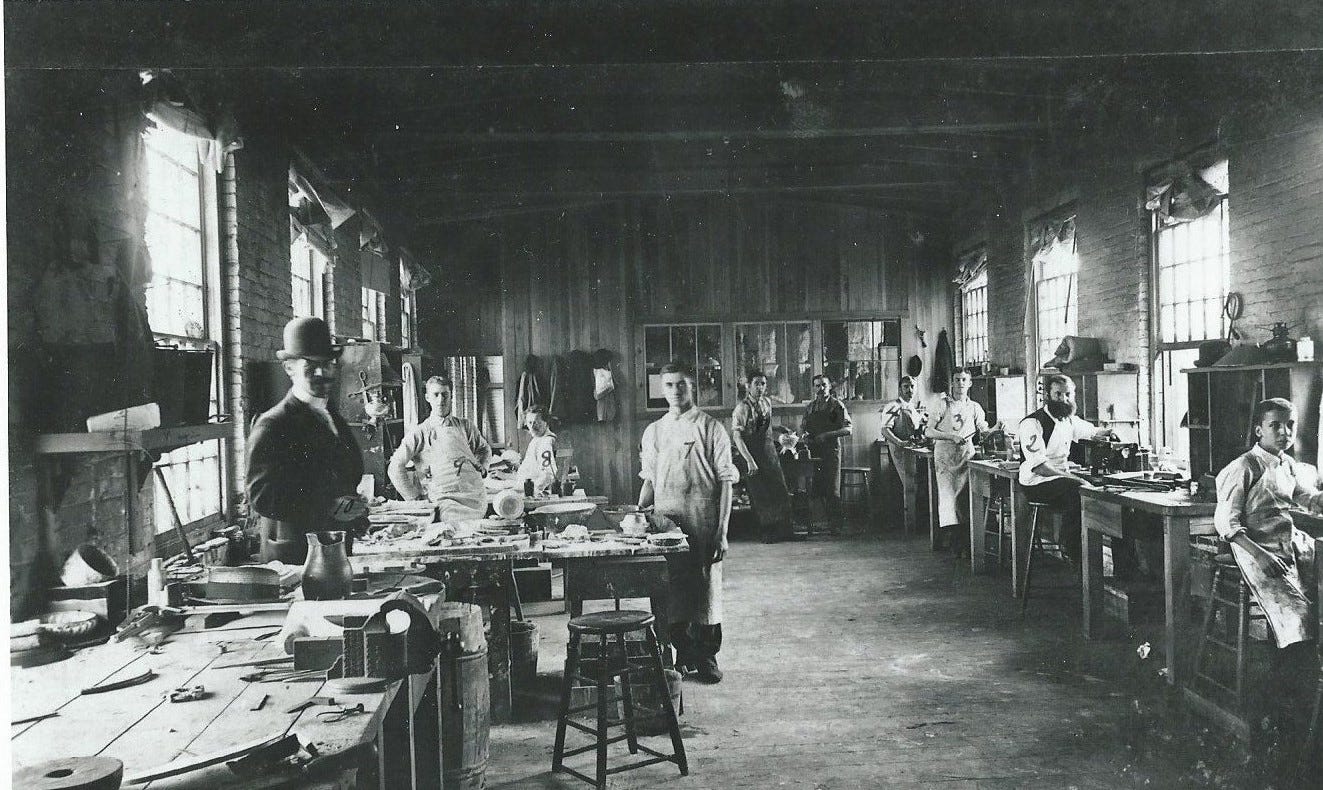Atlas in Greek mythology was the Titan who led all the Titans of earth in a war against the Olympian Gods for control of the heavens. As punishment, Zeus gave Atlas the responsibility of carrying the weight of all the heavens on his shoulders for eternity.
There are many sculptures through the world depicting Atlas. Some have him holding up pillars of the “firmament of heaven,” some a celestial globe, and some the earth itself. They are all an indication of strength and fortitude.
This kerosene lamp depicts Atlas bearing the weight of the world on his shoulders. It is a banquet lamp from the late 1880’s. During the late Victorian times, banquet lamps decorated dining tables and sideboards of the most affluent homes. The lamps were large and ornate.
Our lamp would be close to 30” tall with the addition of the missing chimney and globe. The blue globe held the kerosene oil. A wick threaded through the hole at the top and into a wick holder which supported a large clear chimney and globe.
It is thought that the lamp was made by Craighead & Kintz, a Connecticut company that made intricate bronze plaques, sconces, inkwells and oil lamps. They had showrooms in Boston and New York City; however, the manufacturing company was in Ballardvale, (Andover) MA.
In 1883, Horace Craighead, president of the company, and Joseph Kintz, superintendent, moved their factory to Ballardvale, into the former Whipple File Company building.
In 1888, Craighead and Kintz, according to Massachusetts Historical Commission Reconnaissance Survey 1985 report, employed 280 people who made goods worth about $100,000. About $3 million today. Many employees were German immigrants recruited by Craighead and Kintz for their skills in bronze pattern design and molds.
By the late 1880’s kerosene lamps were very popular.
Kerosene fixtures got their start in 1846 when Abraham Geisner, a Canadian medical doctor and geologist distilled coal in a search for a cleaner fuel for lighting. His experiment resulted in a clear liquid that produced a yellow flame, brighter than any produced by oil. In 1853, Ignacy Lukasiewicz, a Polish pharmacist and inventor, discovered that kerosene could be extracted from crude oil, making it more affordable. Lukasiewicz designed the first kerosene lamp to light his pharmacy.
Developments and improvements on lamp designs followed as more and more people switched from the use of candles with their open flame hazards, to more controlled flame lighting.
In March 1892, Horace Craighead was awarded US Patent #471507 for a Central-draft lamp. The design used a tubular wick which gave greater light and required a large globe-shaped chimney for the draft needed to burn properly.
Craighead & Kintz became famous for their "Daylight" lamps which, as their advertising boasted, “Gives the nearest artificial approach to Daylight possible.”
Unfortunately, the success of Craighead and Kintz didn’t last long. Business saw a decline, perhaps due to growing popularity of the electric light bulb. In 1895, the business was closed.
The company may have been short-lived, but as far as we’re concerned, Atlas is still holding his own. Whether the lamp was made here at Craighead & Kintz is still a matter of discussion, however. When it was given to us in 1918, the donor, Moses Abbott Wood, indicated that it was a C & K lamp. It seems that Craighead & Kintz Co. marked their lamp wick holders with C&K. Without a wick holder on ours, there is no other indication of the maker of the lamp.
Toward the end of my research, I discovered this image which adds to question. It is a photocopy of a page from an unknown book which shows a catalogue page with a lamp much like our Atlas. Oh, and the fine print says, “F. H. Lovell & Co. New York USA Catalogue of 1968-69.”
We don’t have the answer, but we’re keeping the lamp!
Thanks for reading!
If you have any comments, stories, or know who made our Atlas, please email or leave a comment below. I’d love to hear from you.
Marilyn
Resources
Andover Center for History and Culture Collections
United States Patent and Trademark Office













Thanks Marilyn! Another great piece of history.
This is the first I've ever heard of the Whipple File Company! My mother's side of the family was Whipples and goes back to pre-revolutionary days - there's a connection to the Whipple house in Ipswich. I want to know more about the Whipple File Company!